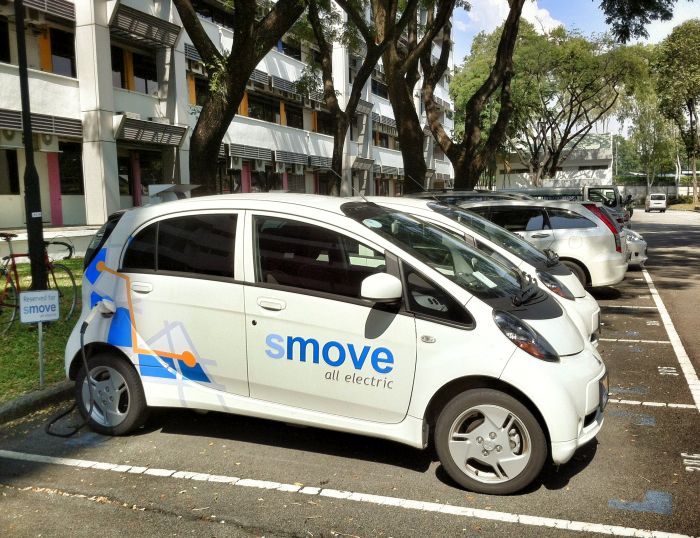Smove is a Singapore-based startup that provides car sharing services to Singaporeans while making sure that they also achieve their noble goal of reducing our carbon footprint. Smove, pronounced as ‘smoove’, is basically a smart blend of the words ‘Singapore move, Sustainable move, or Smart move’. Recently, Smove announced a raise of US$1.1M in funding which will be used to increase its current fleet of vehicles that are for rent.
But why electronic cars? Tom Lokenvitz, founder of Smove, gives a narration of his motivation behind starting Smove in an interview with BBC News.
Currently there are over 20 locations available for Smove users to pick up and drop off a car in Singapore, and a total of 17 vehicles for their users; with this recent funding, Lokenvitz told Tech In Asia that he hopes that there will be a total of 100 cars by end of this year. Hopefully, that will also mean that there will be more pick up and drop off locations for their customers as well.

Smove also added a new calendar booking feature in their services early this month, now allowing their customers to book a car anytime in advance and reserve it for multiple days. All Smove users have to do is to select their starting day and returning day, and specify which Smove location they want to pick the car from. This feature allows customers to plan their future journeys and trips so as to avoid any unnecessary inconveniences.

Also read: Selling your car in Singapore? DirectCars gives you the highest offer you can get.
Perhaps, what makes Smove so successful thus far is attributed to its ease of use. By using their EZ-Link card, users can lock and unlock the Smove cars and payment is made directly from their credit card of PayPal. Also, there is only a one-time registration fee of $19 and there are no other hidden charges, users only have to pay according to their usage.
Additionally, users can even change their booking up to 1 hour before their actual booking start time, so if anything unexpected comes up and users have to reschedule their booking, they have at least an hour before their reservation to do so.

A recent study by Eco-Business found that car sharing has recently emerged as a popular form of alternative transport for urban commuters globally. This is especially so in space-constrained cities where the cost of transportation is high.
For Singapore, the popularity of car-sharing has grown due to increasing congestion. Due to its compact nature and relative small size, this makes electric vehicles conducive and a viable transportation option in the country. In support, the Singapore Government has also announced that it may involve car sharing schemes in further trials for electric vehicles in the city-state.
The Land Transport Authority (LTA) said on its website, that there are currently about 300 car sharing services in over 100 locations across the island.
Unlike Smove, iCarsClub works entirely via the mobile app. Cars are located by proximity and the car is fitted with a special box that communicates with the app. Once located, the very same app allows access to the car being shared. Car owners who take part in this scheme, make money from their vehicles’ idle time.

CarClub also operates on the same car-sharing scheme as iCarsClub with bookings and reservations accepted on both desktop and mobile app. The company has over 70 car stations and competitive pricing based on the renter’s frequency. A car rental could pay up to 30% less if $300 worth of value points are purchased and used over a period of four months. Car rental for a full day of use costs S$56 at the lowest tier, as stated on the website.

Besides iCarClub and CarClub, Smove also faces stiff competition from traditional car rentals like Drive.SG. But with the Government’s support and increased awareness in reducing our carbon footprint, Smove has occupied a niche position by being the first company in Singapore to offer solely electric vehicles.

Even though it costs less to rent a petrol-fueled car, Smove’s Toyota Prius C hybrids is also gentle on your wallet when it runs on electric mode, which means lesser to almost no expenditure on gas! Sounds economical to me.
Also read: Tesla’s Model S, And Why Aren’t Our Cars Flying Yet?








